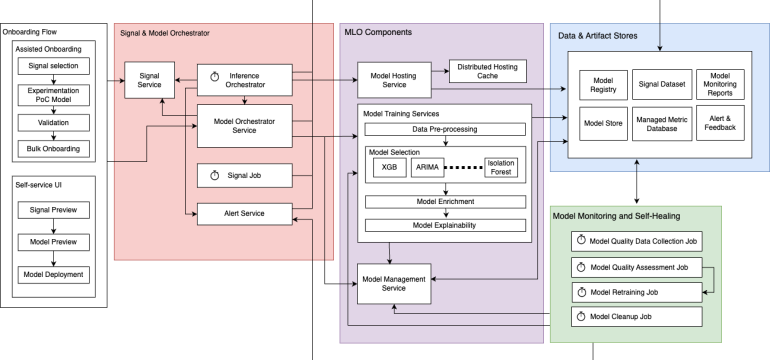Authors: Hanzhang Wang, Gowtham Kumar Tangirala, Gilkara Pranav Naidu, Charles Mayville, Arighna Roy, Joanne Sun, Ramesh Babu Mandava
Published on: April 24, 2024
Impact Score: 7.6
Arxiv code: Arxiv:2404.16887
Summary
- What is new: Unlike earlier methods, AIDR integrates statistical, ML, and deep learning models with rule-based thresholds and features both univariate and multivariate models maintained through distributed services.
- Why this is important: Monitoring Walmart’s business and system health in real-time to swiftly detect anomalies.
- What the research proposes: A machine learning-based anomaly detection product, AIDR, that offers real-time monitoring and has reduced mean-time-to-detect by over 7 minutes.
- Results: Covered 63% of major incidents, served predictions from over 3000 models, and achieved lower time to detection and fewer false positives.
Technical Details
Technological frameworks used: Distributed services for scalability and high availability, feedback loop for model quality assessment.
Models used: Statistical, machine learning, and deep learning models, both univariate and multivariate.
Data used: nan
Potential Impact
Competitors in retail and e-commerce by enhancing operational efficiency, potentially impacting suppliers and other stakeholders relying on traditional anomaly detection methods.
Want to implement this idea in a business?
We have generated a startup concept here: SysGuard AI.



Leave a Reply